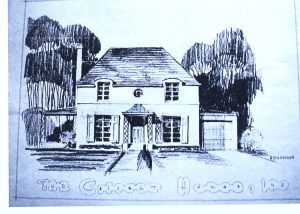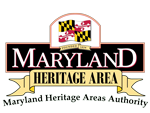Calvert Town -Albert Cassell’s Unfilled Dream

This article is based on a story in The Calvert Historian Volume XXXXI-201-16, which was adapted from a presentation by Peter Sefton and Sally Berk to the Calvert Historical Society based on their article in the Washington History, Vol 27. No. 2 (Fall 2015). “The Dream Dies Hard: Albert Cassell’s Calvert Town”.
Background. Albert I. Cassell (1895-1969) was a noted African American architect, engineer, and entrepreneur. He was born in Towson, Maryland in a family of modest means. From an early age he wanted to become an architect. A teacher at his school in Baltimore encouraged him to pursue studies to become one. Cassell decided that Cornell would be his college. When he was in his teens, he moved to Ithaca, New York to finish high school and improve his chance to be admitted to Cornell. He gained admittance but his studies were interrupted by service in the army during WWI. He returned to Cornell, completed his degree and went on to an exemplary career as an architect. Cassell’s career included becoming both an instructor and an architect for Howard University. He designed many buildings on their campus, including the magnificent library.
He also designed buildings for other colleges, private individuals and municipalities. However, Cassell had a vision early in his career to design and create an entire town – Calvert Town – by the Chesapeake Bay in Calvert County Maryland. Cassell envisioned that the town would be primarily for the benefit of “Colored persons”. According to Sefton and Berk, “His vision was that the town would provide economic self-reliance and an egalitarian lifestyle for African Americans. Cassell’s plan combined Booker T. Washington’s concept of self-sufficiency and the vision of the tourism as industry and the New Deal resettlement community program.” He likely was responding to the racial prejudice he experienced and saw all around him in segregated Washington, DC. He named his envisioned town Calvert Town after the county’s first settlement Calvert town.
Getting started. Due to the financial success of his career, Cassell was able in 1931, at the depth of the Depression, to purchase 380 acres in Calvert County. The land was outside of Prince Frederick east on Dares Beach Road on the Chesapeake Bay. In 1931, when Cassell purchased the land, Calvert County was rural, with the majority of its workers employed on farms and the largest crop was tobacco. Socially and economically, it was thoroughly segregated. African Americans made up 50% of the population, but all the state representatives and local public officials were white. Its black population was mainly tenant farmers and farm laborer which in 1930, had an illiteracy rate of 22%.
Cassell approached the project with three principles – 1) supporting initiatives that would provide for improved economic and social standards – quality education, health care, and recreation; 2) formation of communities that provided for growing their own food; and 3) the New Deal concept of developing an agrarian industrial village. By 1935, Cassell had developed a comprehensive plan for a self-sustaining community for which he sought a government grant of $5,000,000 for wages and a loan of $4,500,000 for building materials. The plan also provided for strong central management and a bi-racial board.
Designed as a place to live. The town was designed to include farmland and factories, but also amenities not common at that time. These included a sewage treatment plant, electrification, a fire department, and a local hospital. It would also include factories, a hotel, casino, theatre, a boardwalk and deepwater pier. The total site would be divided into five zones – farm buildings with worker residences, farmland, public buildings, residential enclaves, and an entertainment complex.
Housing. There were three house designs in a French country style. They all had attached garages and were upper middle class in terms of size and amenities. They were two stories, with three bedrooms and a bath. Landscape plans included a large family garden.
Roadblocks. Cassell had applied for loans and grants from the Public Works Administration (PWA). He knew the PWA chief Harold Ickes from Maryland, had called the plan very complete. Other responses to the project were not so positive. As a general matter across the country, such projects did not have the support of real estate and other interests. While rumors abounded that the proposal had been disapproved, Cassell continued his planning. When after months he did not hear anything regarding his proposal, he decided to ask several high-powered colleagues to join him in a meeting with President Roosevelt, which they did. Joining Cassell were distinguished Howard Professor Kelly Miller, Tuskegee Institute President Robert Morton, and others. According to Cassell and the others, the meeting was encouraging, but no firm commitment was made. A month later they were notified that no funds were available at the time.
Cassell turned from federal support to charitable funds, turning to foundations for assistance. When the Calvert Town Society’s funds were exhausted, Cassell attempted to develop another community – Chesapeake Heights on the Bay – as a resort community for African Americans. Cassell sold several dozen lots before the bank financing the project collapsed. In 1969, after Albert Cassell died, the property was sold to a large-scale developer who built traditional tract housing on the site.
North Cassell Boulevard, off Dares’s Beach Road in Calvert County, Maryland, is all that remains of the dream of Cassell’s proposed Calvert Town.
Conclusions. Ultimately, Cassell’s Calvert Town depended on PWA funding, which they were not able to secure. Reasons for this included a shift in the direction of the New Deal community building program, which left out the Calvert Town design but included the Greenbelt project. Calvert Town’s failure was likely also attributable in part to racism. The Baltimore Sun’s article referencing the project as a “Negro colony” did not help.
Additional Resources
The Dream Dies Hard: Albert Cassell’s Calvert Town, The Calvert Historian, Volume XXXXI 2014-2016, The Calvert County Historical Society, Prince Frederick, Maryland. – available at the Calvert Historical Society or online by membership. 24 pqges – more details.
The Calvert Historical Society has considerable information and documents on site concerning Albert Cassell, his work and architectural renderings for Calvert Town.
Cornell University – Ezra Magazine: Building on opportunity: The Cassell family of architects (cornell.edu)
Albert I. Cassell biography Albert I. Cassell (1895-1969) • (blackpast.org)
Plan $9,500,00 Negro Homestead: Group working to have Colony Located in Calvert County, The Baltimore Sun, Baltimore, Maryland · Thursday, January 31, 1935 page 14. article.
Historical society presentation tells tale of unrealized dream for 1930’s black community, Southern Maryland News, Andrew Cephas [email protected], September 25, 2015.
